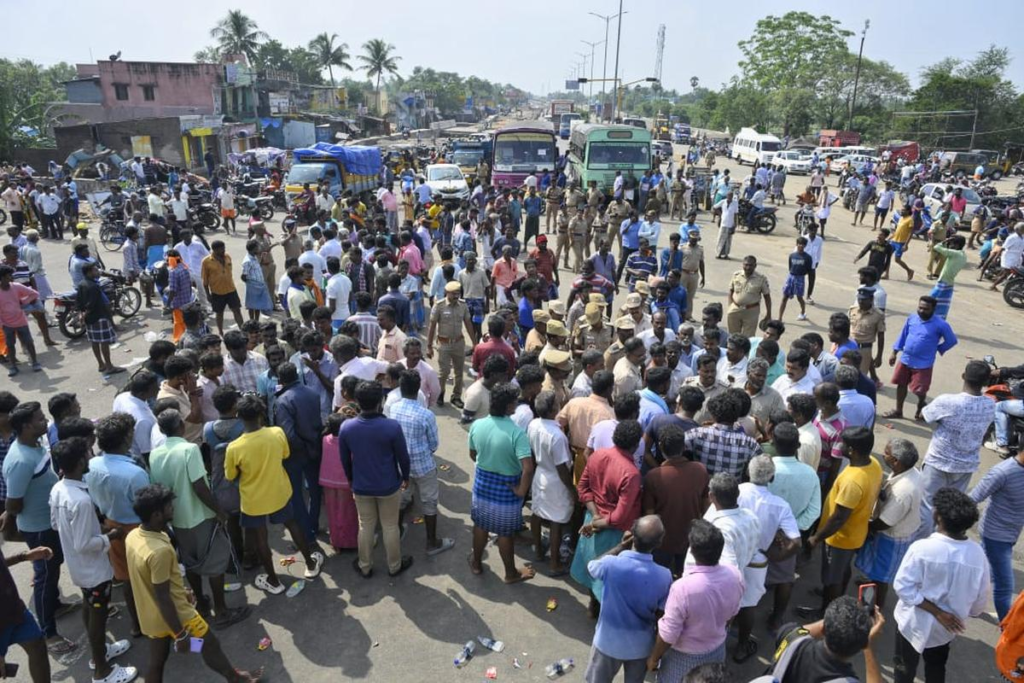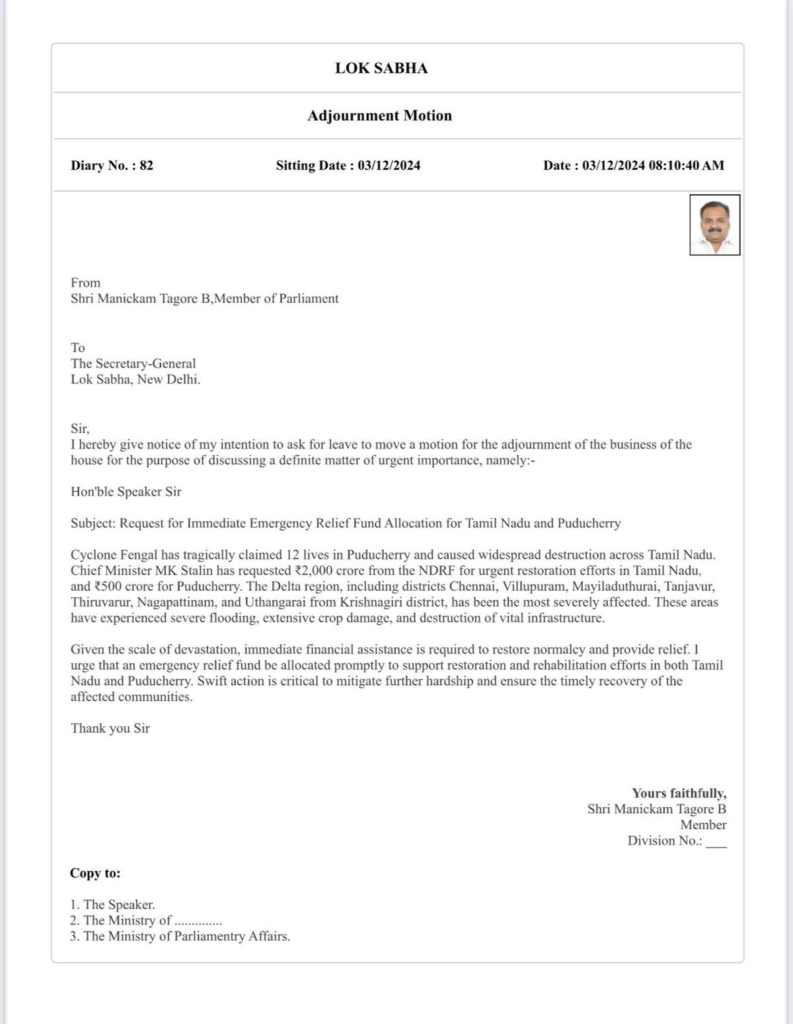Cyclone Fengal has left a trail of destruction across Tamil Nadu and neighboring states, with torrential rains causing severe flooding, rising reservoir levels, and widespread damage to infrastructure and agriculture. The situation remains critical as water inflows in major rivers and dams continue to surge. Several districts face challenges in ensuring safety, managing relief efforts, and restoring normalcy. From Hogenakkal’s swelling waters to Chennai’s massive cleanup operations, the state is grappling with the impact of the cyclone, prompting both local and national responses to mitigate the crisis.
Hogenakkal Faces Rising Waters
The inflow into Hogenakkal in Tamil Nadu’s Dharmapuri district surged dramatically on Tuesday, December 3, 2024. Beginning at 14,000 cusecs at 6 a.m., it escalated to 21,000 cusecs by 8 a.m. and further peaked at 28,000 cusecs by mid-morning. Officials warned of further increases in inflow into the Biligundulu reservoir in Krishnagiri district, owing to incessant rains. District Collector K. Shanthi imposed a ban on tourists and coracle operations in Hogenakkal as a precautionary measure.
Sathanur Dam Sparks Controversy
Leader of Opposition Edappadi K. Palaniswami criticized the DMK government for inadequate management of water discharge from the Sathanur Dam in Tiruvannamalai district. Alleging the release of 1.68 lakh cusecs without prior notice, he held the government accountable for flooding across northern Tamil Nadu.
Rising Water Levels in Bhavanisagar Dam
In Erode district, the Bhavanisagar dam neared its full reservoir level of 105 feet, standing at 97.97 feet at noon. The inflow was recorded at 2,722 cusecs, while 500 cusecs were being discharged into the Lower Bhavani Project canal.

Widespread Rainfall and Relief Efforts
Cyclone Fengal brought heavy rainfall to multiple districts. In Tamil Nadu, Karur district recorded the highest rainfall at 13 cm, while Krishnarayapuram, Sholingur, Tirupathur, and Yercaud received 10 cm each. Kerala also faced heavy rainfall, with red alerts in five districts, including Kannur and Kozhikode.
Cyclone Damage and Rehabilitation
Cyclone Fengal caused widespread destruction across Tamil Nadu, claiming 12 lives and damaging over 2,400 huts and 721 houses. Approximately 2.11 lakh hectares of agricultural land were inundated. Tamil Nadu Chief Minister M.K. Stalin requested ₹2,000 crore from the National Disaster Response Fund for relief and rehabilitation. Additionally, ₹5 lakh ex-gratia was announced for families of those who died in landslides.
Cleaning Efforts in Chennai
In Chennai, intensive cleaning operations cleared 8,000 tons of waste, fallen trees, and debris left by the cyclone. Parks, which had been closed as a precaution, reopened to the public on Tuesday after extensive cleanup efforts.
Education Disruptions
Schools and colleges in affected districts of Tamil Nadu and Karnataka remained closed due to heavy rains. Universities, including Pondicherry University and Annamalai University, postponed examinations, with new dates to be announced soon.
National and State Responses
Prime Minister Narendra Modi assured Tamil Nadu Chief Minister M.K. Stalin of full support for relief efforts. Congress leader Rahul Gandhi called on party workers to assist in local relief operations. Meanwhile, Andhra Pradesh Chief Minister Chandrababu Naidu conducted a review meeting, highlighting the cyclone’s damage to 6,824 hectares of agricultural land and infrastructure in 53 mandals.

Looking Ahead
The weakened remnants of Cyclone Fengal are expected to bring heavy rainfall to 15 districts in Tamil Nadu as it moves westward. Meteorological authorities anticipate further challenges, with the potential for heavy rainfall and localized flooding in the coming days.
Image Credit: Agency
Also Read: Gujarat: Couple Arrested For Attempted Murder Of On-Duty Police Officers During Vehicle Check